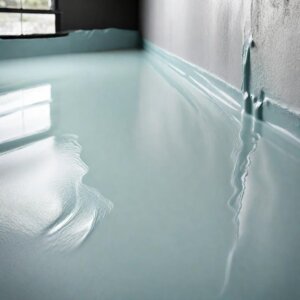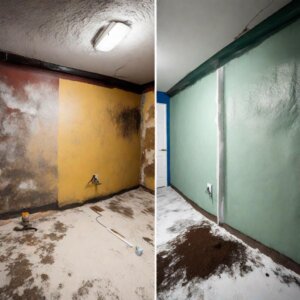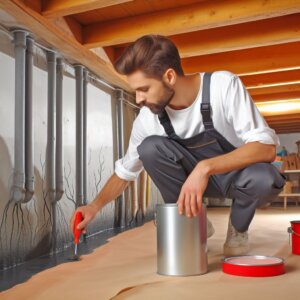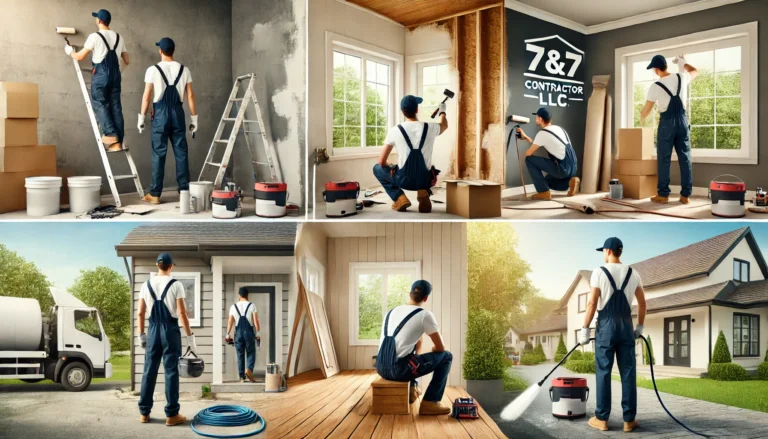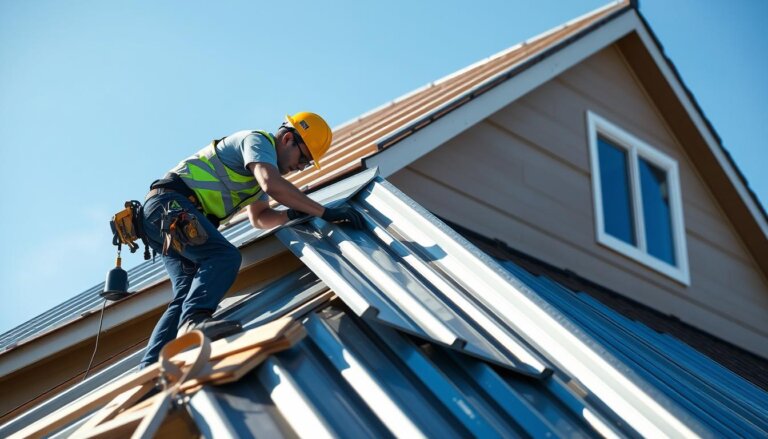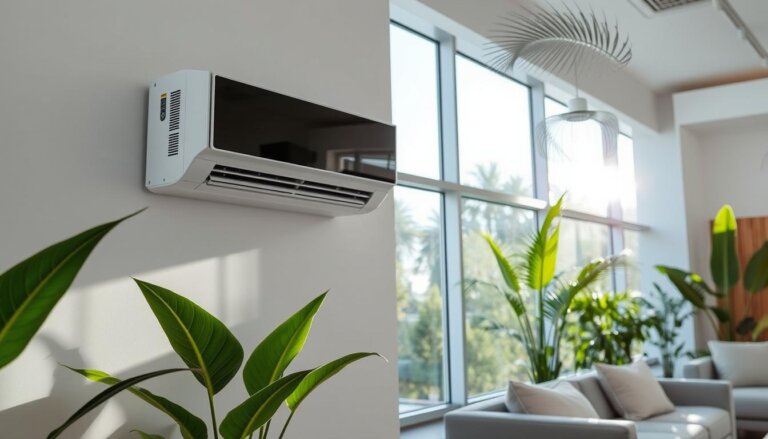Basement Waterproofing Paint: Shield Your Home from Water Damage
Keeping a home structurally stable and healthy requires a dry basement. A number of issues, such as the formation of mould, broken stuff, and even compromised quality of construction, can result from water a breach. We’re going to explore the topic of basement waterproofing paint in this blog post, which is an affordable way to shield your basement from the dangers of water damage.
Understanding Basement Waterproofing
Causes of Basement Water Issues
Hydrostatic pressure, leakage of rainwater, and poor drainage are some of the root causes of basement water problems. To effectively address water-related problems, it is essential that you understand these factors. Rainwater Seepage: If your basement has gaps and cracks in the foundation, water may seep in due to heavy rainfall and poor drainage. Hydrostatic Pressure: Particularly in areas with an elevated water level, the pressure of water from the earth can drive moisture through the foundation. Poor Drainage: Infiltration of water is more likely to occur when gutters fail to function properly and there is insufficient grade pointing towards your foundation.
The Consequences of Basement Water Damage
Water damage to a basement can have serious and expensive consequences. Here are some typical outcomes: Growth of Mold and Mildew: Moist areas serve as havens for the growth of mould and mildew, which can be harmful to your health and belongings. Structural Damage: Water can erode the foundation, resulting in fissures and jeopardizing your home’s structural stability. Health Risks: Too much moisture can cause indoor air quality concerns and health problems, especially for people who have respiratory conditions.
Techniques for Basement Waterproofing
There are numerous ways to stop and deal with basement flooding. These fall into two general groups: external and interior waterproofing methods. Basement Waterproofing Methods
Interior Waterproofing
Applying materials like sealants and waterproof paint inside the basement is a standard method of interior waterproofing. Application of Waterproofing Paints & Coatings: Homeowners often opt for basement waterproofing paint, also known as a sealant. The barrier that these paints create keeps water from penetrating the walls. Filling holes and cracks in the basement walls with sealants prevents water from seeping in.
Exterior Waterproofing
The primary objective of exterior waterproofing techniques is to stop water before it even hits the foundation walls. Installing Drainage Systems: To divert water away from the foundation, drainage systems such as French drains may be installed all the way around the house. The application of exterior membranes that are waterproof forms an armor against water invasion on the exterior walls.
Combination of Interior and Exterior Waterproofing
For complete protection, it could occasionally be required to utilize both exterior and interior waterproofing methods.
Basement Waterproofing Paint: A Closer Look
What is Basement Waterproofing Paint?
A specially formulated coating called waterproofing sealant or basement waterproofing paint is designed to form a barrier that is water-resistant on the interior walls of the basement. Types and Composition: There are several distinct mixes of basement waterproofing paints, most of which are based on silicate or latex. How It Works: These paints provide an impermeable coating on the walls that keeps rainwater out of the basement.
Benefits of Applying Waterproof Paint
Basement waterproofing paint has a number of benefits. Cost-Effectiveness: If you’re comfortable doing the installation yourself, this is a cost-effective solution for safeguarding your basement. Application Ease: Waterproofing paint application is a reasonably simple procedure, making it affordable for homeowners. DIY vs. Professional Application: Homeowners have the option of doing the basement waterproofing paint application themselves or hiring professionals.
Limitations and Considerations
There are a few restrictions and things to remember, though: Surface Pretreatment: The efficacy of the paint depends on the correct preparation of the surface. Compatibility with Other Treatments: Take note of the potential interactions among waterproofing paint and other basement waterproofing techniques that you may use. Maintenance: Periodic maintenance may be necessary for basement waterproofing paint, just like for any other waterproofing technique.
Steps to Applying Basement Waterproofing Paint
Getting the Basement Ready
To ensure a successful application, it’s important to properly prepare your basement before applying waterproofing paint. Cleaning and Fixing in Cracks: Beginning by giving the basement walls a thorough cleaning to get rid of any particles, dirt, and loose or peeling paint. Use a suitable filler to glue down any holes and cracks that are visible. Choosing the Correct Paint: Pick a high-quality waterproofing paint for your basement that works well with your walls and fulfills your needs. Go over product labels carefully and follow manufacturer recommendations.
Procedure of Application
Despite it being a straightforward operation, applying waterproof paint to a basement demands attention to detail. Preparing the Surface: A primer is usually essential to waterproofing paints. Follow the manufacturer’s instructions and apply the primer to the dry, clean walls, allowing it to dry. With a brush, roller, or sprayer, apply the basement waterproofing paint or varnish after the priming has dried. Adhere to a methodical approach and guarantee uniform covering. Use multiple coatings as advised.
Let to Dry and The Cure
Observe the manufacturer’s recommendations and allow the waterproofing paint to set and dry. For the reason for the paint to develop a solid barrier against moisture, this step is important.
Security Steps to Take While Applying
Keeping in mind the following safety measures when painting your basement waterproof. For the release of vapours, make sure the basement has enough ventilation. Put on the proper safety equipment, such as a mask and gloves, in order to prevent getting into connection with skin and breathing in fumes. To recognize any missed spots or inconsistent application, keep the area well-lit.
Maintenance and Reapplication
Despite waterproofing paint for basements providing protection, it is not a durable fix. Reapplication and routine upkeep may be recommended. How Often Should You Reapply?: The amount of time between coats varies on a number of variables, including the type of paint, the weather, and the state of your basement. Inspect the instructions provided by the manufacturer and keep an eye out for wear indicators in your basement. Indications of the Need for Reapplication: Keep an eye out for indicators like as paint peeling or splitting, wet areas on the walls, or evident water stains. These suggest that reapplication is needed. Recommended Maintenance Procedures: To extend the life of the waterproofing, it’s crucial to maintain gutters, downspouts, and drainage systems in good working order in addition to regular reapplying.
Other Basement Waterproofing Considerations
Paint for waterproofing basements is only one component of an all-encompassing plan. Take into account additional steps to improve your basement’s security:
Sump Pumps
Sump pump installation can assist in controlling excess water and avert basement flooding. To keep your basement dry, it collaborates with waterproofing paint for basements.
Gutters and Downspouts
Water entering your basement is less likely when gutters and downspouts are operating properly, directing rainfall away from your house.
Landscaping and Grading
Another strategy to keep water from collecting close to the basement is to make sure that the garden is graded away from the foundation of the house.
DIY vs. Professional Waterproofing
You have two options when it comes to waterproofing your basement: handle it yourself or hire experts. Every choice has benefits and cons. Pros and Cons of DIY: Although it can save money, DIY projects can take a lot of time and work. It is appropriate for individuals with some DIY expertise and smaller-scale projects. Pros and Cons of Professional Assistance: Whereas hiring experts guarantees knowledge and frequently quicker results, it can be more costly. Larger or more complicated undertakings are best left to the professionals.
Final Thoughts
In a nutshell, one of the greatest important actions in preventing water damage to the property is to have your basement waterproof paint applied. Whether you decide to do it yourself or employ an expert, opting to keep your basement dry is a sound investment in the longevity of your house and the well-being of your family. You may proactively guard your basement against water damage before it becomes a problem by using the appropriate waterproofing methods.


